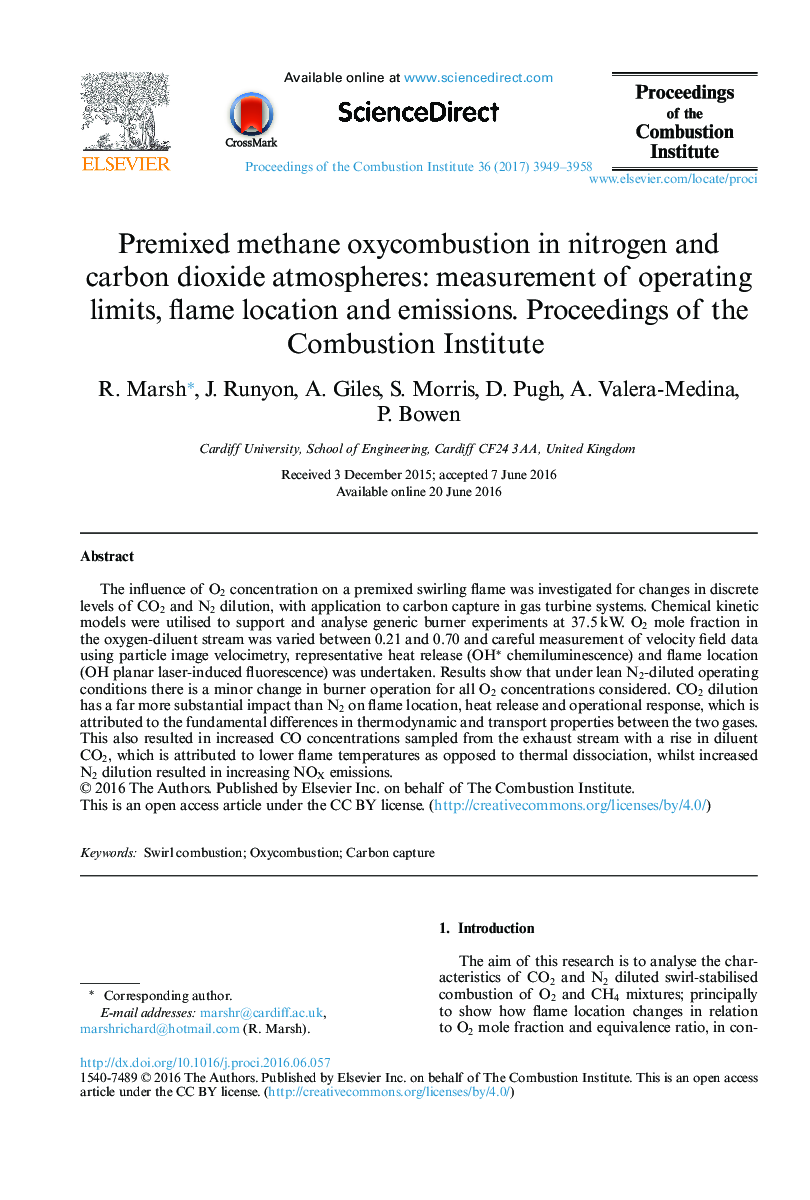| Article ID | Journal | Published Year | Pages | File Type |
|---|---|---|---|---|
| 4915454 | Proceedings of the Combustion Institute | 2017 | 10 Pages |
The influence of O2 concentration on a premixed swirling flame was investigated for changes in discrete levels of CO2 and N2 dilution, with application to carbon capture in gas turbine systems. Chemical kinetic models were utilised to support and analyse generic burner experiments at 37.5Â kW. O2 mole fraction in the oxygen-diluent stream was varied between 0.21 and 0.70 and careful measurement of velocity field data using particle image velocimetry, representative heat release (OH* chemiluminescence) and flame location (OH planar laser-induced fluorescence) was undertaken. Results show that under lean N2-diluted operating conditions there is a minor change in burner operation for all O2 concentrations considered. CO2 dilution has a far more substantial impact than N2 on flame location, heat release and operational response, which is attributed to the fundamental differences in thermodynamic and transport properties between the two gases. This also resulted in increased CO concentrations sampled from the exhaust stream with a rise in diluent CO2, which is attributed to lower flame temperatures as opposed to thermal dissociation, whilst increased N2 dilution resulted in increasing NOX emissions.
